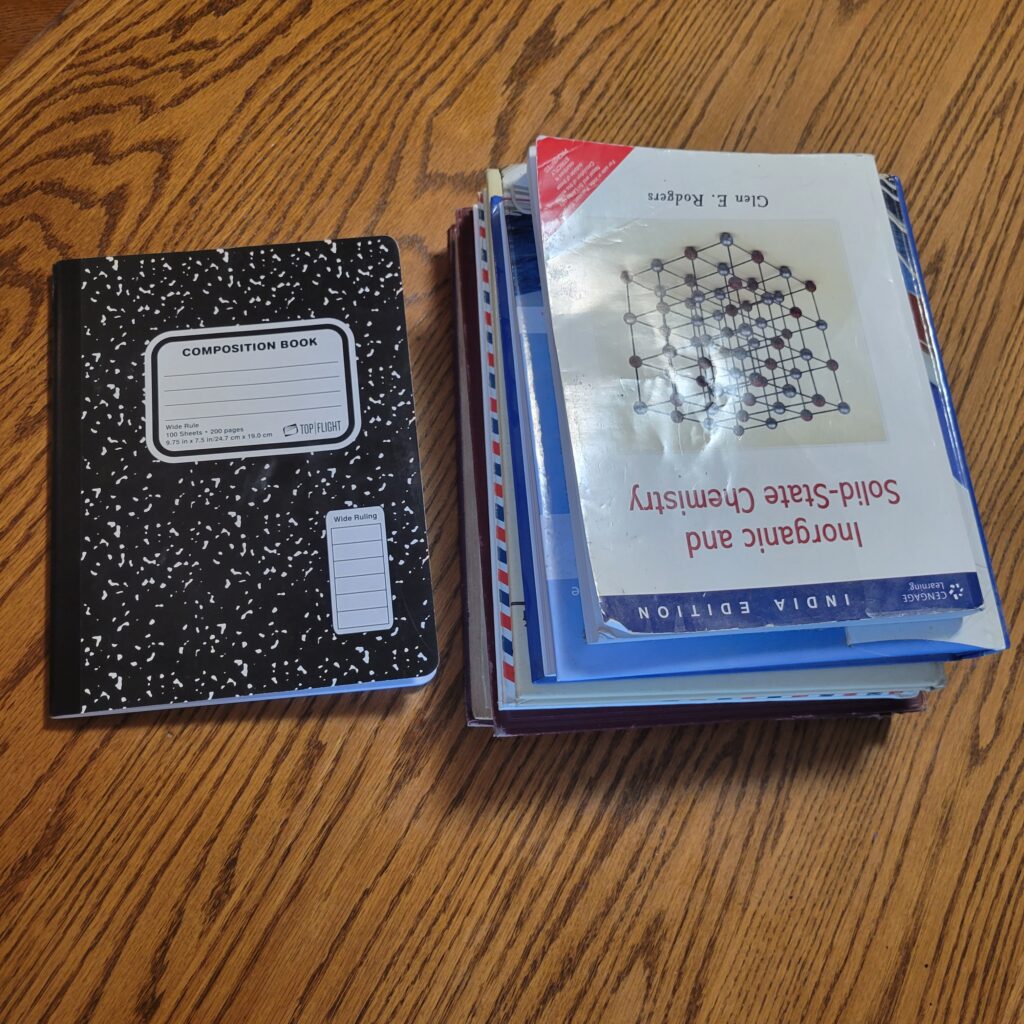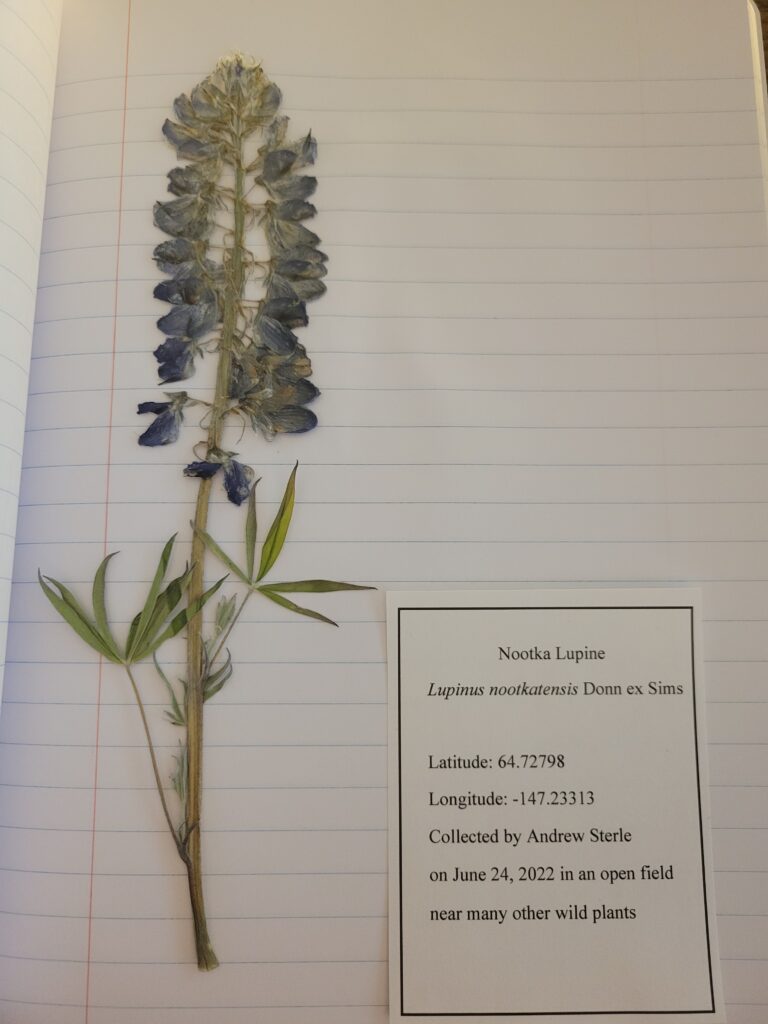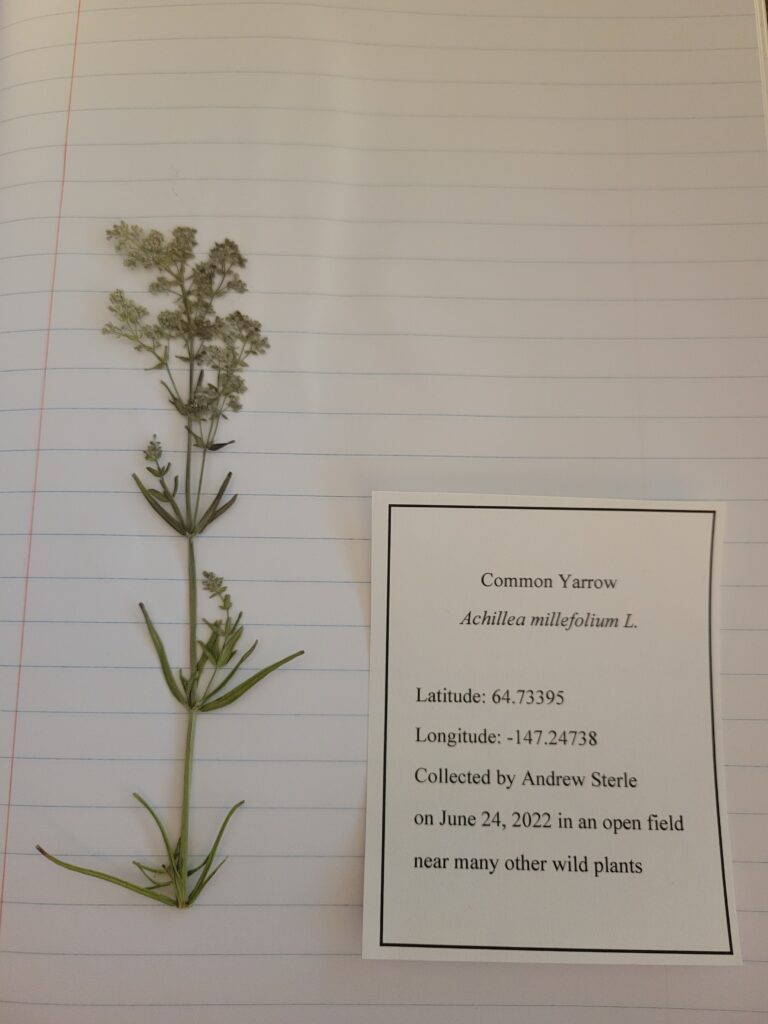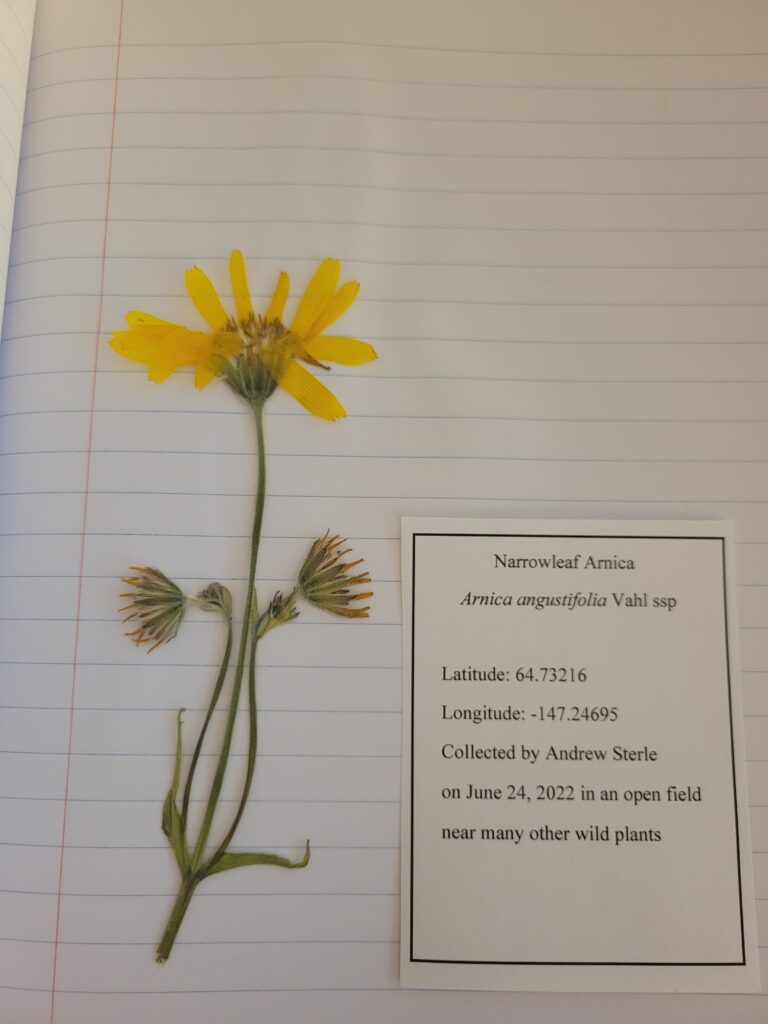For my pressed plants, I chose some that I encountered while on a walk near the Chena Lake flood control project in North Pole. The flat area directly to the east of the embankment has small clusters of black spruce and birch trees, and is full of wildflowers in the areas with no trees. To gather and press the specimens, I brought a notebook with me that I stored them in throughout my walk. When I got home, I got a few books together and used them to press the plants down flat.

Here are the plants I chose to press out of the many that I saw in that area.





Well done Andrew! These look great and the labels look very professional. Generally, you would add a specific number to your collection, or if you do not want to assign a number, you would use s.n., for sine numero, without number. It helps people to determine exactly which of your collection someone might be citing in a publication. Because you could be collecting multiple specimens on the same day and at the same collection and if they are not identified, the person that is identifying your specimens, they would be able to quickly tell you which specimens they are looking at. You wrote some of the label information in the text of your post, which is fine. We would add this information (Country, state, etc.) to the label before the latitude and longitude information or on top of the label, as in the attached image. These are just general rules we follow when making labels for incorporating the specimens into the herbarium, but the information for this assignment is there.